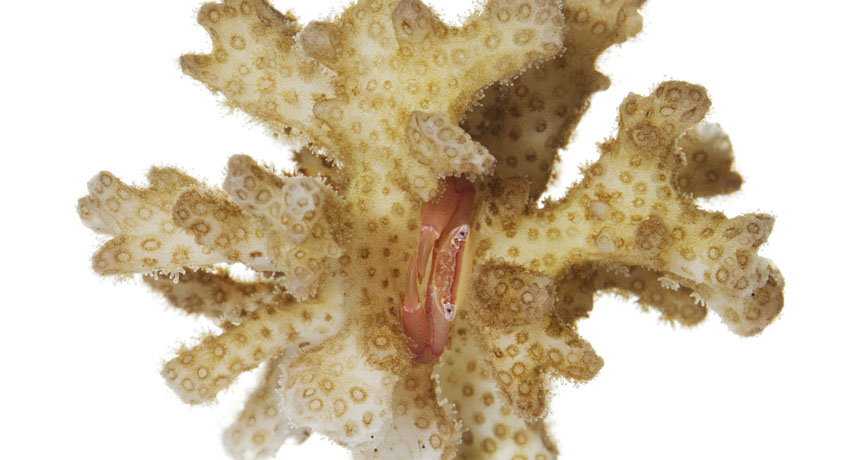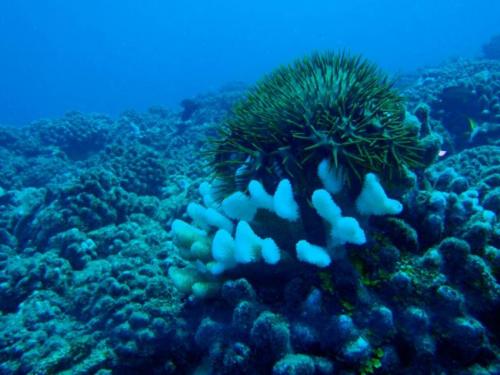Remember Seabird? He was a Ph. D. student in the lab, and is now Dr. Seabird McKeon at the Smithsonian Marine Station in Ft. Pierce, Florida. A paper we co-authored on Trapezia defense against coral predators came out this week in PeerJ, and even made the front page. It’s open access, so you can read it for yourself right here. These plucky little crabs defend their coral hosts against different species of corallivores, including the snail Drupella cornus, the cushion sea star Culcita novaeguineae, and the fearsome Acanthaster planci, or Crown-of-Thorns sea star (COTS if you’re in the know).

The response of the four species of Trapezia we tested against these predators varied by the size of the crab species. Little Trapezia serenei and Trapezia punctimanus defended their hosts effectively against Drupella cornus (the little snail predator), but couldn’t do much about the big predators. Medium sized Trapezia serenei and Trapezia bidentata could fend off Culcita novaeguineae, but didn’t bother with the snail threat. And the biggest crabs, Trapezia flavopunctata, had a striking effect on their host survival in a natural experiment in Moorea, French Polynesia during an outbreak of Crown-of-Thorns sea stars.

There’s also been a bit of buzz about the article on some news sites, so if popular articles are more your cup of tea, here’s a few features of the article, featuring the gorgeous photography of Trapezia by David Liitschwager:
Science News
Smithsonian Magazine
Science World Report
Phys.org
Worm wishes,
Jenna